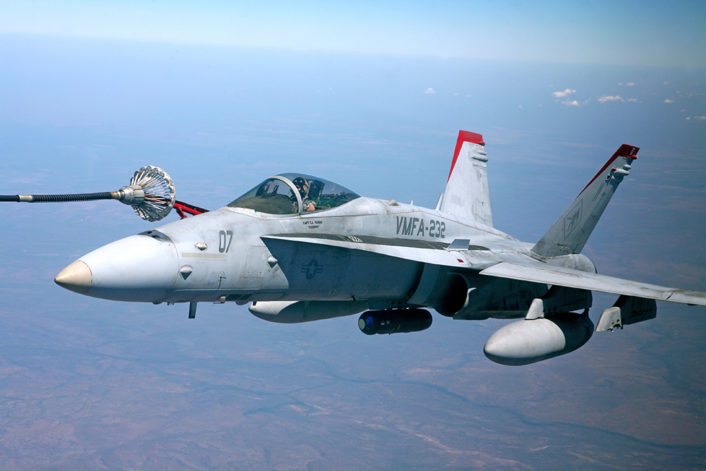Legacy Hornets are crashing at an alarming rate!
A Royal Canadian Air Force single-seat CF-188 Hornet from 4 Wing Cold Lake crashed inside the Cold Lake Air Weapons Range in Saskatchewan, on Nov. 28. The pilot died in the incident.
The rate of crashes involving legacy Hornets is quite alarming. At least 8 major incidents have involved legacy Hornets (that is to say, the older variant of the F/A-18) in the last 6 months!
Two U.S. Marine Corps F-18 Hornets from MCAS Miramar collided mid-air during a training mission on Nov. 9 near San Diego. One pilot landed safely at the NAS North Island whereas the other one ejected over the sea and was rescued.
Few days earlier, on Oct. 25, an F/A-18 Hornet from Miramar crashed near Marine Corps Air Ground Combat Center in Twentynine Palms killing the pilot.
On Aug. 29, a Swiss Air Force F/A-18 Hornet crashed shortly after taking off from Meiringen airbase. The 27-year-old pilot was found dead two days later.
On Aug. 2, a U.S. Navy F/A-18C Hornet flown crashed near Fallon, Nevada. The pilot safely ejected.
On Jul. 27 another Marine Hornet pilot died in a crash near 29 Palms.
Same fate for a Blue Angels pilot flying a Hornet that crashed on Jun. 2, shortly after takeoff during a practice flight in Tennessee.

In the wake of the Hornet crashes from June through October, the U.S. Marine Corps temporarily grounded its non-deployed Hornets. Unfortunately, few days after the ban was lifted, two more F/A-18Cs were lost on Nov. 9.
Hornet crashes over the last year have depleted the number of available airplanes for training and operations. According to USNI News the service had 85 Hornets available for training, compared to a requirement for 171.
In order to face the critical shortage of operational fighters caused by both crashes and high operational tempos, the U.S: Marine Corps has launched a plan that will see Boeing upgrade 30 retired legacy Hornets (currently stored at the 309th Aerospace Maintenance and Regeneration Group at Davis-Monthan AFB, Arizona) to a standard dubbed F/A-18C+.
With this upgrade, that will also embed new avionics, the service will be able to keep up with its operational tasks until the F-35 is able to take over.
Once upgraded to the C+ standard, these “gap fillers” should be more than enough to conduct combat operations in low-lethality scenarios like those that see the USMC at work these days.
Furthermore, once these “refreshed” Hornets are delivered to the squadrons, older airframes can be retired, improving flight safety.
Canada has just announced the plan to use F/A-18E/F Super Hornet multi-role fighters as “gap fillers” until Ottawa decides on a replacement for its fleet of legacy Hornet aircraft.
Top image credit: RCAF
Related articles
















